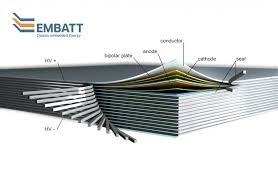
Breaking News
 $26M Frozen on Blockchain - With One Click
$26M Frozen on Blockchain - With One Click
 Italy are on national strike shutdown rejecting digital enslavement...
Italy are on national strike shutdown rejecting digital enslavement...
 The following U.S. states are currently using the rebranded "Reporty Homeland Security" so
The following U.S. states are currently using the rebranded "Reporty Homeland Security" so
 NATO Chief Urges Europe To Prepare For Long-Term World War With Russia, China, Iran & North Korea
NATO Chief Urges Europe To Prepare For Long-Term World War With Russia, China, Iran & North Korea
Top Tech News
 HUGE 32kWh LiFePO4 DIY Battery w/ 628Ah Cells! 90 Minute Build
HUGE 32kWh LiFePO4 DIY Battery w/ 628Ah Cells! 90 Minute Build
 What Has Bitcoin Become 17 Years After Satoshi Nakamoto Published The Whitepaper?
What Has Bitcoin Become 17 Years After Satoshi Nakamoto Published The Whitepaper?
 Japan just injected artificial blood into a human. No blood type needed. No refrigeration.
Japan just injected artificial blood into a human. No blood type needed. No refrigeration.
 The 6 Best LLM Tools To Run Models Locally
The 6 Best LLM Tools To Run Models Locally
 Testing My First Sodium-Ion Solar Battery
Testing My First Sodium-Ion Solar Battery
 A man once paralyzed from the waist down now stands on his own, not with machines or wires,...
A man once paralyzed from the waist down now stands on his own, not with machines or wires,...
 Review: Thumb-sized thermal camera turns your phone into a smart tool
Review: Thumb-sized thermal camera turns your phone into a smart tool
 Army To Bring Nuclear Microreactors To Its Bases By 2028
Army To Bring Nuclear Microreactors To Its Bases By 2028
 Nissan Says It's On Track For Solid-State Batteries That Double EV Range By 2028
Nissan Says It's On Track For Solid-State Batteries That Double EV Range By 2028
New Paper Ream-Like Battery Boasts Impressive Energy Density

Project Manager Mareike Wolter, presented the battery concept that, in theory, would enable a Tesla Model S to travel up to 1,000 km instead of current 540 km (335 miles – 100D), using the same battery pack footprint.
The solution apparently is a completely new battery design that wouldn't any waste space on inactive components in the system.
"To do so, they got rid of the housings that encase individual batteries and turned to a thin, sheet-like design instead of a cylinder. Their metallic sheet is coated with an energy-storage material made from powdered ceramic mixed with a polymer binder. One side serves as the cathode, and other side serves as the anode.
The researchers stacked several of these so-called bipolar electrodes one on top of the other, like sheets of paper in a ream, separating the electrodes by thin layers of electrolyte and a material that prevents electrical charges from shorting out the whole system.

 Carbon based computers that run on iron
Carbon based computers that run on iron

